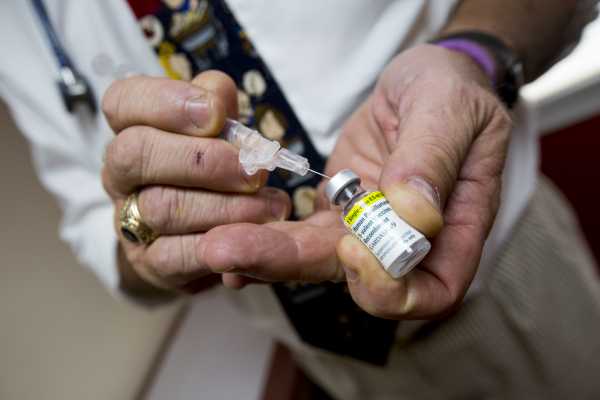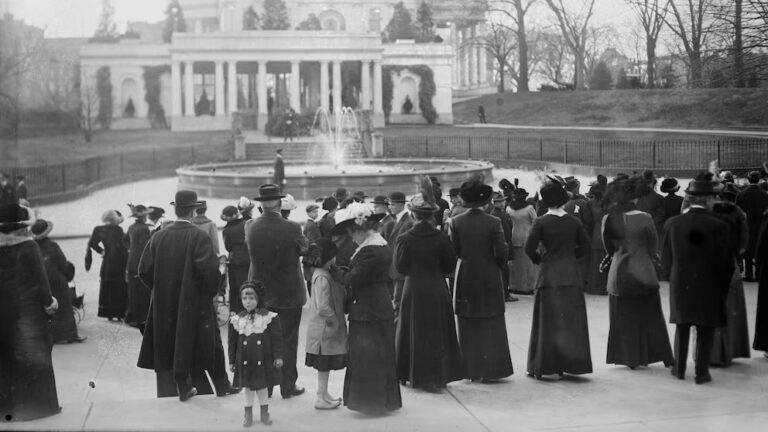
When the HPV vaccine first came on the market in 2006, the CDC recommended it for a relatively narrow slice of the population: just girls and young women, ages 11 to 26.
Over the years, though, that recommendation has broadened dramatically, and for good reason. There’s more and more evidence that the shot protects against the human papillomavirus, and prevents cervical, anal, and other cancers.
Most recently, in June, the Advisory Committee on Immunization Practice at the Centers for Disease Control and Prevention (the group that helps set the vaccine guidelines in America) voted to change its recommendation again. They said the vaccine should be given to all boys and young men up to age 26 (extending the age range from 21). They also decided men and women as old as 45 now should now talk to their doctors about the vaccine (though stopped short of endorsing it outright for all older adults).
That last decision — to suggest people as old as 45 now consider the vaccine — was controversial. There’s currently a global shortage of HPV shots and some worried that expanding the definition of who should get the shot was not a good use of limited supplies. Others worried it may obscure the message that it’s most effective in kids.
If all these changes to the HPV guidance are confusing, it doesn’t help that right now, the HPV vaccine information on the US Food and Drug Administration and Centers for Disease Control and Prevention websites look different. (The FDA has approved the shot for people as old as 45, but the CDC is still recommending it only for women through age 26 and for men through age 21.) So let’s clear up some of that confusion: With HPV-related cancers on the rise, it’s a good moment to review what the HPV vaccine does and who, exactly, should get it.
There are more than 200 types of HPV. Fourteen can cause cancer.
HPV is an infection that can be transmitted through genital, anal, or oral sex.
It is also the most common STD in the United States. The virus will infect almost every sexually active person at some point in their lives. There are more than 200 types of the virus — and most don’t cause serious disease. A few “low-risk” types, however, can cause warts around the genitals, anus, mouth, or throat, according to the National Cancer Institute.
But HPV can also be deadly, one of a few STDs linked to cancer. It now causes nearly all cervical cancers, 90 percent of anal cancers, 60 percent of penile cancers, and 70 percent of oropharyngeal cancers (i.e. cancers of the back of the throat, the tonsils, and the base of the tongue).
Again, not all types of the virus. What doctors really worry about are 14 “high-risk” types that can cause cancers. And the prevalence of those dangerous HPV types is high. According to an April 2017 CDC report, one in four men and one in five women in 2013 to 2014 had a high-risk type of genital HPV, while one in 25 men and women had a high-risk type of oral HPV. (Not everyone who has one of these types will develop cancer.)
As people have shifted toward having more partners and more oral sex, HPV-related cancer cases have been creeping up. Between 1999 and 2015, HPV-related oropharyngeal cancers in middle-aged people increased 2.7 percent per year among men and 0.8 percent per year among women.
Other HPV-related diseases like genital and anal cancers in men and women are on the rise, too. According to the CDC, the number of new HPV cancers reported annually increased significantly from 30,115 in 1999 to 43,371 in 2015.
The HPV vaccine is a cancer- and wart-preventing vaccine
The good news is that the HPV vaccine targets these high-risk, cancer-causing types. (An added benefit: The vaccine also prevents genital warts.
In the US, only the 9-valent HPV vaccine has been available since 2017. Produced by Gardisil, it targets nine HPV types: 6, 11, 16, 18, 31, 33, 45, 52, and 58. Two of these types, HPV types 6 and 11, are considered “low risk” because they only cause warts. The rest are deemed “high-risk.”
In a recent review of the research from 14 high-income countries published in the Lancet, researchers found the vaccine dramatically reduced HPV in girls and young women, aged 13-to-24, and cut the incidence of precancerous lesions, within this age group as well.
The vaccine, the study found, reduced the rate of genital and anal warts in girls and women up to age 29. And even though boys and men weren’t always the target of HPV vaccine campaigns, they benefitted too: Anal and genital wart diagnoses dropped in males, likely because fewer HPV viruses were going around.
There’s also evidence is emerging that it can prevent oropharyngeal cancers too — which is encouraging, since they’re on the rise.
That’s why doctors are now calling the HPV vaccine “one of the most significant cancer prevention tools ever developed” and it is why countries are like Australia are talking about fully “eliminating” cervical cancer.
The recommendation of who should get the shot just expanded
Because the HPV vaccine prevents infections, it works best when people get it before they become sexually active and are exposed to the virus. In June, the CDC’s Advisory Committee on Immunization Practices, known as ACIP — which sets the national vaccine schedule — reaffirmed that children should start getting the shots early.
“The absolute goal is to get the HPV vaccine to girls and boys ages 11 to 12,” said Linda Eckert, a professor of obstetrics and gynecology at the University of Washington. “That’s the key target population, and that’s when it has the highest efficacy.” So ACIP recommends males and females start getting two doses of vaccine around 11 or 12 years old and before age 15.
But now, they’re recommending both girls and boys, age 15 to 26, get vaccinated (with three doses — because the body’s immune response to the shot declines with age).
They’re also suggesting people aged 27 to 45, who haven’t been fully vaccinated, talk to their doctors about possibly getting the HPV shots, too. The idea is that there may be people in this age group who could benefit from the vaccine, even later in life. “If you are married, monogamous, and 35 — there’s probably no reason to run out and get the HPV vaccine. But if you’re dating and having new partners, and are at risk for acquiring new infections, it would be worth having a discussion with your provider,” Eckert said.
If you’ve read different recommendations at the CDC and FDA about who should get the vaccine and when, there’s a good reason for that, Eckert said. While the FDA approved the expanded age range last October, the ACIP only voted on it in June, and CDC hasn’t fully implemented ACIP’s policy yet. So while doctors can start following ACIP’s new guidance, it’s not yet clear that health insurers will.
America’s HPV vaccine rates are still too low
America lags behind other industrialized nations when it comes to HPV vaccination rates. A major reason for the lag is that some parents are concerned about the vaccine’s safety — even though there’s no good data suggesting significant safety concerns. And it doesn’t help that politicians and popular media figures, like Alex Jones, spread fear about the shot.
In most states, the vaccine isn’t required for school entry, like the polio or measles-mumps-rubella vaccines are. According to the American Cancer Society, only Rhode Island, Virginia, and DC have HPV vaccine requirements in place (and Puerto Rico also has also recently added it to the list of routine shots).
There’s also hesitancy among doctors to recommend the vaccine, in part because of the sexual stigma around it. But when doctors suggest the shot, the CDC reports, teens are likely to receive it. Because the vaccine is so effective, oncologists are working on a rebranding effort to encourage pediatricians and family doctors to more forcefully endorse immunization.
Coverage rates have been slowly been growing. It’s recommended for boys and girls ages 9 to 26, and now seven in 10 girls and six in 10 boys get the shot. Again, that’s still lower than the uptake of other routine vaccinations — such as the polio or measles-mumps-rubella vaccines — which typically hovers around 80 or 90 percent.
Sourse: vox.com






